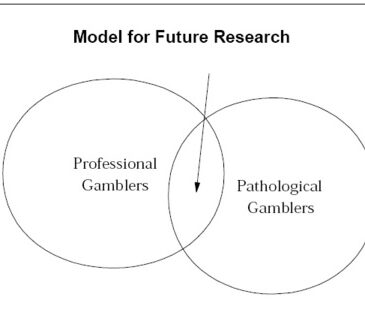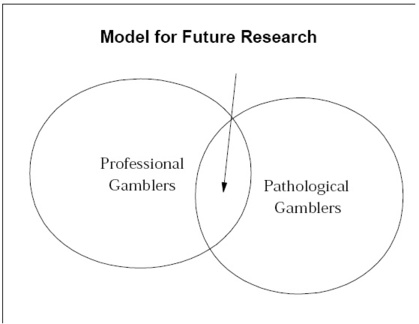Professional gamblers such as “Nick the Greek” Dandolos and “Pittsburgh Phil” devoted much time and energy to gambling. Characteristics of these two legendary professional gamblers include an excellent memory, intense concentration, self-discipline, and tremendous self-confidence*. Some professional gamblers have used extreme strategies to influence game results. For example, professional dice players have undergone surgical procedures in which magnets were implanted into the fingertips of the third and fourth digits of the shooting hand**. The gambler with these implanted magnets can influence the outcome of the game when using dice with a metallic core. The Diagnostic & Statistical Manual of Mental Disorders (DSM-IV) states that clinicians should distinguish professional gambling from pathological gambling by the limited risks and discipline associated with professional gambling. The American Psychiatric Association considers pathological gambling to be “persistent and recurrent maladaptive gambling behavior that disrupts personal, family, or vocational pursuits.”***, p. 615. Both pathological and professional gamblers spend a lot of time engaged in gambling. What differentiates the two is, in part, the professional gambler’s skill in estimating the probability of outcomes and ability to maintain discipline and refrain from impulsive actions. Some research has been conducted examining the overlap (see figure below) between pathological and professional gambling. Future research can investigate more precisely what individual characteristics or life events draw a professional gambler into disordered gambling behavior.
Sources:
*Kusyszyn, I. (1972). The gambling addict versus the gambling professional: A difference in character? The International Journal of the Addictions, 7(2), 387-393.
**Wishnitzer, R., Laiteerapong, T., & Hecht, O. (1981). Subcutaneous implantation of magnets in fingertips of professional gamblers–case report. The Journal of Hand Surgery, 6(5), 473-474.
***American Psychiatric Association. (1994). The diagnostic and statistical manual of mental disorders. Washington, D.C.: Author.
This public education project is funded, in part, by The Andrews Foundation.





